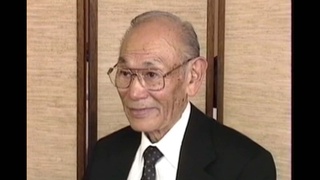Interviews
Being scared during combat
There were times when I was — must confess — scared shit-less. For instance, when you hear a German machine gun who had ambushed us in our advance. It was so dense forest that you couldn’t see them, but you could hear them. He would say, “Hands up! Hands up!” and we look around at each other, are we gonna surrender to these guys? No way, no way. I didn’t have a rifle — I just had a pistol in my hand — and what to do under these circumstances? We weren’t face-to-face. We were just with voice contact. But I felt that we’re going to survive this intact, and as it turned out, unlike today’s war, when it gets dark everybody just digs a hole as deep as you can and crawl in it to avoid tree burst shells that come running down. And in the morning the fighting doesn’t start till dawn again.
Date: January 3, 2015
Location: California, US
Interviewer: Lily Anne Y. Welty Tamai
Contributed by: Watase Media Arts Center, Japanese American National Museum







